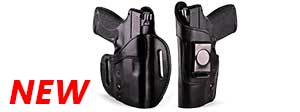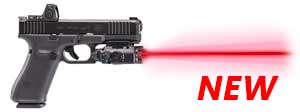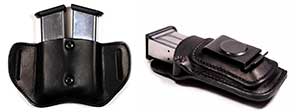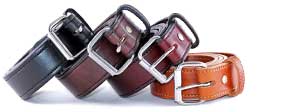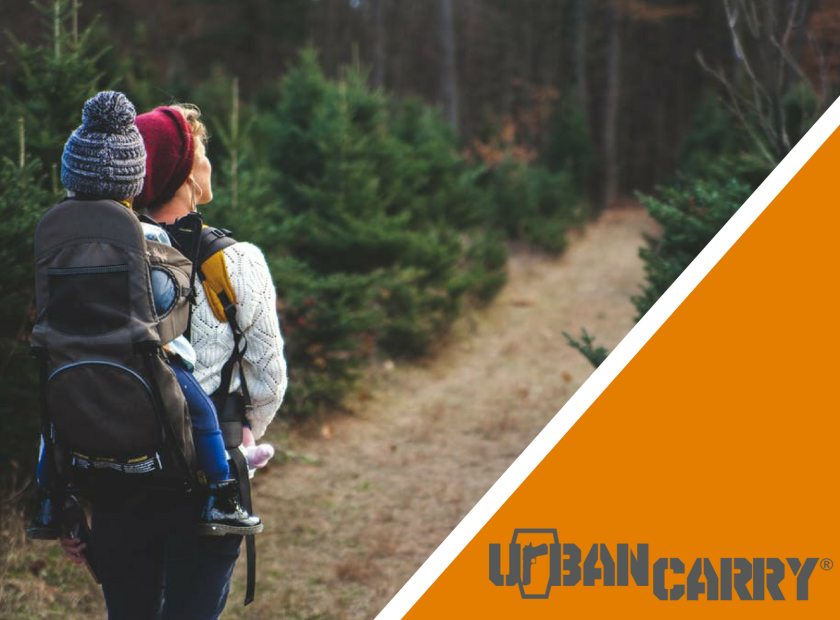Concealed Carry During Exercise
Concealed Carry During Exercise
Running, biking, hiking and a number of other outdoor activities are a great way to get in shape and some people use exercise as a way to escape the daily grind and clear their head. The last thing on someone’s mind is getting attacked while they’re out fishing or doing pushups in the park, and most folks would assume that the easiest way to resolve this worry is to simply be armed and ready.
It’s obvious that the times you are most vulnerable are naturally the most important times to be armed, but it isn’t always that easy. There are a number of factors that come into play when you are deciding to carry, especially during activities that make it more difficult to carry.
Even if you workout in a conventional gym, there are times that a firearm may be necessary, like when a deer busts in through the front window...
So the question is: How do you stay safe when you are exercising or playing outdoors? These can be vulnerable times that you need to be prepared for.
So what are some of the main reasons that a runner should stay armed?
- Muggers
- Sexual Predators
- Larger animals (especially for those who exercise outdoors)
- Dog attacks
The FBI Uniform Crime Reports in 2014 states that there were 1,165,383 violent crimes including rape, murder, robberies, and aggravated assault in the U.S. As a result, The Crime Prevention Research Center reported that 12.8 million Americans have a concealed carry permit, an 8.2 million increase from 2007.
It’s fairly common for people to jog alone and sometimes those long runs can take you through some sketchy areas but at the same time, fear shouldn’t keep us from doing what we enjoy. It is however, something that should be prepared for. Let’s discuss ways to maximize your comfort and safety without having your gun bouncing around during exercise.
Staying Comfortable
One of the biggest concerns for carrying while active is staying comfortable. With holsters like an IWB or Appendix carry, you may start to notice while running that chafing can become a big comfort issue if the holster is rubbing against your skin. To alleviate that discomfort, compression shorts underneath your holster can help reduce friction and eliminate the holster rubbing directly against your skin. Put on running shorts over this and you may find it works a lot better and solves many issues with IWB holsters.
But what about the weight? Carrying a few extra ounces or pounds may not be much of a problem during the day to day, but with your firearm weighing down on your clothing weight can be an issue during your exercise or outdoor activity. Carrying a smaller firearm or fewer rounds may lighten the load, but if you’re in an area where large animal encounters are a possibility then this may not be the best solution.
Cater to Your Attire
To get away from the chafing and weigh down situations that might occur, thigh or ankle holsters may be a fitting solution. Unfortunately, these holsters generally require more clothing to properly conceal, which isn’t desirable for someone who’s working out or cruising down a trail on their bike. Another issue may be your draw time, since these holsters don’t have the best reputation for fast draws.
However, if you’re out hiking or fishing, a drop leg thigh holster may be the perfect fit. It keeps the firearm out of your way, but the gun stays secure and within easy reach if you need it. You will want to check your state’s laws regarding open carry before doing this, though.
Don’t Sacrifice Draw Speed
Let’s be realistic, after a hard workout or long day on the trails, you’re not going to have the same draw speed as you usually do when practicing at home. Exercise puts the focus of your body and mind into other things causing distraction and energy loss, so it makes sense that you may lose some tactical advantage.
At times, carrying your gun in a backpack or fanny pack may be your best and only option. It’s good to carry regardless of the method, but a predator is not going to wait while you attempt to unzip your bag in a panic and retrieve your weapon.
Since your draw speed may be affected, it’s helpful to remember these tips to help you remain prepared during exercise or outdoor recreation:
- Don’t wear headphones - Most may find this one unfortunate because music can make a workout a lot easier to muscle through but when running in urban areas, being able to hear your surroundings may give you a few extra seconds to avoid or prepare for an attack.
- Bring a friend or a dog - There is always safety in numbers and having an extra set of eyes my help you spot a sketchy situation before it happens.
- Bring a cell phone with you - Some runners choose to do other wise due to pocket space or possible damage to their phone while running but having a way to quickly call the police or a friend in an emergency situation may be the one thing to help save you from an attack.
- Exercise in well populated and well-lit areas - The majority of runners choose to work out during early morning or late evening because of their schedules and the afternoon heat. If you are prepared and aware of your surroundings, staying safe in these situations should not be an issue. Your chance of becoming a victim is decreased during daylight and in well populated areas.
It maybe unrealistic to use all of these tips every time that you plan on exercising or going on an excursion, but utilizing one or two can help make sure that you are properly prepared.
Keep Your Firearm Clean
Keeping your firearm clean is something that every gun owner should keep up with but there are some situations where your gun may need a little more TLC. After a demanding workout, it’s likely that you (and the firearm you are carrying) would be drenched in sweat. Moisture will cause rust if left unattended to, decreasing the effectiveness and reliability of your firearm. There may also be dirt and grime from the environment around you that’s found its way into your firearm, and that needs to be removed as well.
No one wants a sweaty, rusty gun so make sure that after every work out or adventure you take the time to wipe down your gun. Depending on the holster you use, it may be a good idea to place a cloth between your skin and holster to protect it from some of the sweat and potential sweat-stained stench.
What Are Your Options?
A great holster option for most athletes is the Sport Belt. It’s made with 5" profile Military-Grade Elastic and strong rare earth magnets that hold your gun firmly in place to eliminate any bouncing around. It uses a Velcro closure for easy dressing and size adjustment so that you don’t have to have your firearm weighing down on your clothing. It can accommodate your firearm, and extra mag (or two), your cell phone and other small items. The features of the Sports Belt make for the perfect combination of safety and comfort.
In all situations, one of the most important factors is comfortability and competency with the tactical equipment you are using, especially in the case of an emergency. Everyone is different so make sure that you explore your options and do your research to find the firearm and carrying option you are most comfortable with.
Practice, Practice, Practice!
Get some hours in at the range to practice your skills and spend time at home to practice your draw and dry firing - muscle memory is key when seconds count.
What are the ways that YOU will stay safe during your exercise?


